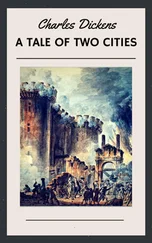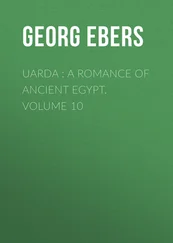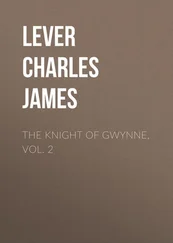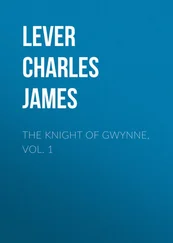Charles Bucke - Ruins of Ancient Cities (Vol. 2 of 2)
Здесь есть возможность читать онлайн «Charles Bucke - Ruins of Ancient Cities (Vol. 2 of 2)» — ознакомительный отрывок электронной книги совершенно бесплатно, а после прочтения отрывка купить полную версию. В некоторых случаях можно слушать аудио, скачать через торрент в формате fb2 и присутствует краткое содержание. Жанр: foreign_antique, foreign_prose, на английском языке. Описание произведения, (предисловие) а так же отзывы посетителей доступны на портале библиотеки ЛибКат.
- Название:Ruins of Ancient Cities (Vol. 2 of 2)
- Автор:
- Жанр:
- Год:неизвестен
- ISBN:нет данных
- Рейтинг книги:4 / 5. Голосов: 1
-
Избранное:Добавить в избранное
- Отзывы:
-
Ваша оценка:
- 80
- 1
- 2
- 3
- 4
- 5
Ruins of Ancient Cities (Vol. 2 of 2): краткое содержание, описание и аннотация
Предлагаем к чтению аннотацию, описание, краткое содержание или предисловие (зависит от того, что написал сам автор книги «Ruins of Ancient Cities (Vol. 2 of 2)»). Если вы не нашли необходимую информацию о книге — напишите в комментариях, мы постараемся отыскать её.
Ruins of Ancient Cities (Vol. 2 of 2) — читать онлайн ознакомительный отрывок
Ниже представлен текст книги, разбитый по страницам. Система сохранения места последней прочитанной страницы, позволяет с удобством читать онлайн бесплатно книгу «Ruins of Ancient Cities (Vol. 2 of 2)», без необходимости каждый раз заново искать на чём Вы остановились. Поставьте закладку, и сможете в любой момент перейти на страницу, на которой закончили чтение.
Интервал:
Закладка:
“As great a curiosity as any,” says Mr. Halifax, “were these sepulchres, being square towers four or five stories high, and standing on both sides of a hollow way, towards the north part of the city. They stretched out in length the space of a mile, and perhaps formerly might extend a great way further. At our first view of them, some thought them the steeples of ruined churches, and were in hopes we should have found some steps of churches here; others took them to have been bastions, and part of the old fortifications, though there is not so much as any foundation of a wall to be seen. But when we came, a day or two after, more curiously to inquire into them, we quickly found their use. They were all of the same form, but of different splendour and greatness, according to the circumstances of their founders. The first we viewed was entirely marble, but is now wholly in ruins; and we found nothing but a heap of stones, amongst which we found two statues; one of a man; another of a woman, cut in sitting, or rather leaning, posture, and the heads and part of the arms being broken off; but their bodies remaining pretty entire; so that we had the advantage of seeing their habits, which appeared very noble; but more approaching the European fashion, than what is now in use in the East, which inclined me to think they might be Roman. Upon broken pieces of stone, tumbled here and there, we found some broken inscriptions, but, not affording any perfect sense, they are not worth the transcribing.”
These are the most interesting of all the ruins. As you wind up a narrow valley between the mountain range, you have them on your right and left, topping the hills, or descending to the border of the valley: some presenting heaps of rubbish, and some half fallen, expose their shattered chambers, and one or two still exist in almost an entire state of preservation. They are seen from a great distance, and have a striking effect in this desert solitude.
The ruins of Palmyra and Balbec are very different. “No comparison can be instituted between them,” says Mr. Addison. “The ruins of Balbec consist merely of two magnificent temples, inclosed in a sort of citadel; while here, over an immense area, we wander through the ruins of long porticoes leading up to ruined temples and unknown buildings. Now we see a circular colonnade sweeping round with its ruined gateway, at either end; now we come to the prostrate walls, or ruined chambers of a temple or palace; anon we explore the recesses of a bath, or the ruins of an aqueduct; then we mount the solitary staircase, and wander through the silent chambers of the tombs, ornamented with busts, inscriptions, and niches for the coffins, stored with mouldering bones; and from the summits of funereal towers, five stories in height, we look down upon this mysterious assemblage of past magnificence; and beyond them, upon the vast level surface of the desert, silent and solitary; stretching away like the vast ocean, till it is lost in the distance, far as the eye can reach. The dwelling of man is not visible. The vastness and immensity of space strikes us with awe, and the mouldering monuments of human pride, that extend around, teach us a sad lesson of the instability of all human greatness.”
Though antiquity has left nothing either in Greece or Italy, in any way to be compared with the magnificence of the ruins of Palmyra, Mr. Wood observes, that there is a greater sameness in the architecture of Palmyra than at Rome, Athens, and other great cities, whose ruins evidently point out different ages of decay. But, except four half-columns in the Temple of the Sun, and two in one of the mausoleums, the whole architecture is Corinthian, richly ornamented with some very striking beauties and some as visible faults.
Through the valley of the tombs may be traced remnants of a ruined aqueduct, which formerly conducted water to the town from, at present, an unknown source; it consists of a vaulted passage running underground, covered with a fine hard stucco. In regard to the present supply, there are two rivers, the waters of which, when judiciously distributed, must have conduced greatly to the subsistence and comfort of the ancient inhabitants; but these are now allowed to lose themselves in the sand.
Mr. Wood says that all the inscriptions he saw were in Greek or Palmyrene, except one, which was in Latin. Many attempts have been made to explain the Palmyrene inscriptions. They were generally supposed to be Syriac. Gruter, having seen an inscription at Rome, gave it as his opinion that the characters were Arabic. Scaliger, speaking of the same inscription, gave the subject up in despair. Some have thought they were Greek, translated from the Palmyrene. Upon this hint M. Barthelemy examined the inscriptions copied into Mr. Wood’s work, and came to the conclusion, that Syriac was the living language of the inhabitants of Palmyra, at the time those monuments were erected; and that the greatest part, if not all the characters, are the same as those made use of in writing Hebrew at this day, although they have a different appearance.
We shall now give a few specimens: – “ This splendid and durable monument, Jamblichus, the son of Mocimus, the son of Acaleises, the son of Malichus, erected for himself, his children, and his posterity, in the month of April, year 314. ”
There is another to the same purport, erected in the same month, one hundred years after: – “ This monument, Elabælus Manæus Cocchæus Malachus, the son of Waballathus, the son of Manæus, the son of Elabælus, built for himself and family in the month of April, year 414. ”
Another inscription implies that “ Septimius Odenathus, the most excellent senator, had erected this monument for himself and his posterity, to preserve their name for ever .”
Another contains an epitaph erected by Soræchus, to his wife Martha, in the reign of Marcus Antoninus, A. D. 178.
A third is of the same nature; appropriated by Malchus, to himself and his children, though built by his ancestors.
Besides sepulchral monuments there are others, erected by order of the senate and people of the commonwealth of Tadmor, to the honour of those citizens who had deserved well of the republic. Among these is one in honour of Alilamenes; another in honour of Julius Aurelius Zenobius; another in honour of Jarisbolus; and others in honour of Septimius Orodes. The last of these was a great benefactor to the public and private institutions of Palmyra. He had been an officer in his younger days, and had greatly distinguished himself under his prince, Odenathus, against the Parthians; during the year in which this monument was erected, he exercised the office of symposiarch, in the festival dedicated to their Patron God, Jupiter Belus. That in honour of Alilamenes runs thus: – “The senate and the people have placed this in honour of Alilamenes, the son of Panas, the son of Mocimus, the son of Æranes, devoted lovers of their country, and in every respect deserving well of their country, and of the immortal Gods, in the year 450, and the 30th day of the month of April.”
There are, also, monuments erected by private persons to the memory of their friends. The finest of these contains the grateful remembrance which the Palmyrene merchants, trading to Vologesias 71 71 A city in Persia.
, retained of the great services which Julius Zobeidas did them in that expedition.
Another inscription commemorates the virtues of a person named Malenthon, secretary to the republic of Palmyra, when “the God Hadrian” arrived in the city (A. D. 122). He is remembered for having contributed to the adornment of the temple of Belus, and for having given a largess to the public baths, of oil for the use, not only of the citizens, but of strangers.
The monument erected to Jamblichus seems to be the oldest, and the work of Domitian the latest; taking in about three hundred years between them. The other rich and extensive buildings were, Mr. Wood supposes, erected before the last of these dates, and probably after the first ; perhaps about the time Elabælus built his monument.
Читать дальшеИнтервал:
Закладка:
Похожие книги на «Ruins of Ancient Cities (Vol. 2 of 2)»
Представляем Вашему вниманию похожие книги на «Ruins of Ancient Cities (Vol. 2 of 2)» списком для выбора. Мы отобрали схожую по названию и смыслу литературу в надежде предоставить читателям больше вариантов отыскать новые, интересные, ещё непрочитанные произведения.
Обсуждение, отзывы о книге «Ruins of Ancient Cities (Vol. 2 of 2)» и просто собственные мнения читателей. Оставьте ваши комментарии, напишите, что Вы думаете о произведении, его смысле или главных героях. Укажите что конкретно понравилось, а что нет, и почему Вы так считаете.












